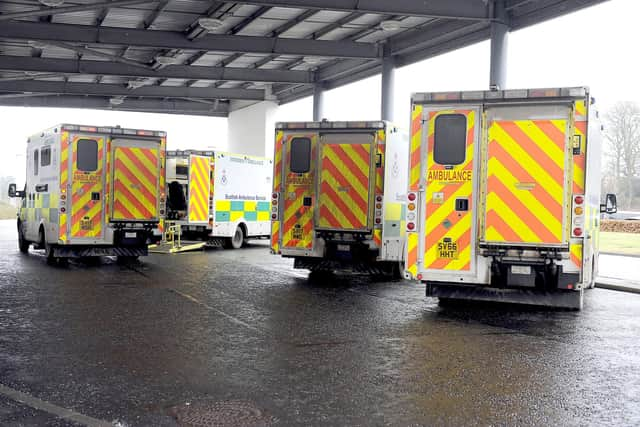NHS Forth Valley: Only two out of five patients turning up at A&E seen within four hour target
and live on Freeview channel 276
Statistics reveal that of the 1094 who arrived in the week leading up to New Year’s Day, 42.8 per cent were seen within the four hour target. This is seven per cent lower than the previous week and still well below the 95 per cent target set by the Scottish Government.
However, the most recent figures from Public Health Scotland, show that 626 patients waited over four hours and of these, 334 waited more than eight hours and 185 of the patients waited more than 12 hours before being treated, admitted or discharged.
Advertisement
Hide AdAdvertisement
Hide AdLooking at the latest monthly figures for NHS Forth Valley in November, 61.4 per cent of patients were seen within four hours, an improvement on the 55.5 per cent figure for the previous month which was also the worst performance by the Larbert hospital in 2022 and also the lowest rate since records began.


FVRH’s emergency unit last met the 95 per cent target in July 2020 when it recorded a figure of 95.7 per cent. However, this was also at the height of the pandemic when the number of people attending A&E departments was down.
The PHS figures reveal that across Scotland in the week leading up to Janury 1, a total of 2506 patients waited for a minimum of 12 hours – up from 1925 the previous week.
NHS Forth Valley has repeatedly said that part of the issue is the lack of beds in the hospital for A&E patients to be admitted to with a similar picture across Scotland.
Advertisement
Hide AdAdvertisement
Hide AdThis week, Health Secretary Humza Yousaf announced an additional £8 million of funding to help the NHS deal with the “extraordinary pressures” it is facing this winter and this will provide about 300 beds in care homes that hospitals can discharge patients to.
The number of patients in Scottish hospitals with coronavirus is up 15 per cent from the previous week and double the figure from four weeks ago.
There are also high numbers of patients being admitted with flu symptoms.
The Health Secretary said: “These interim beds may not be a family’s first, or indeed second, choice for their relative. But I hope families agree in the current circumstances this is about making the best possible choice for those in our care.
Advertisement
Hide AdAdvertisement
Hide Ad“This measure will only be in place for a limited period of time to directly support our hospitals to deal with pressures at the front door.
“However, it will enable some people to move from an acute setting to a more appropriate community one, recognising the risk of prolonged stays in hospital.”
Colin Poolman, Scotland director of the Royal College of Nursing union, said that although “it is right to work to reduce the number of delayed discharges in Scotland’s hospitals”, the Scottish Government “must recognise and address the serious workforce shortages in Scotland’s communities”.
Meanwhile, the BMA said a national conversation on the future of the NHS was needed, not just a “short-term fix”.